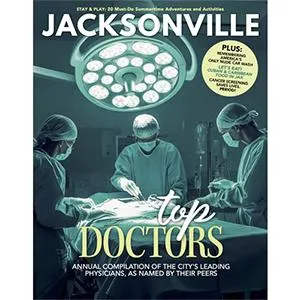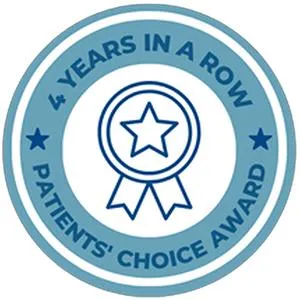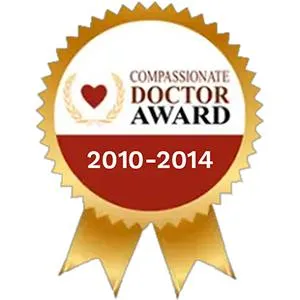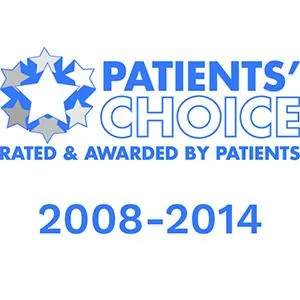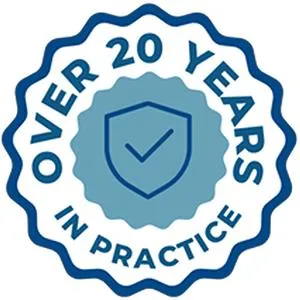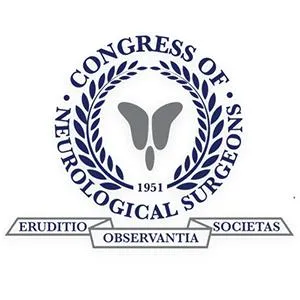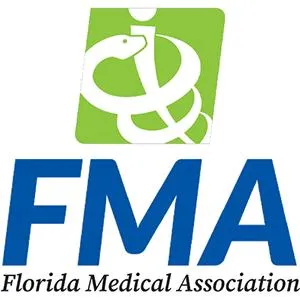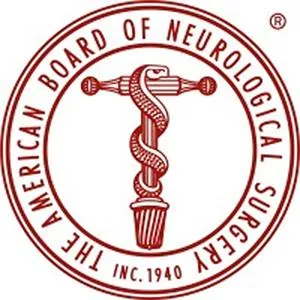Spine Surgery
Stenosis Surgery
Creating More Space for Pinched Nerves and the Spinal Cord
Spinal stenosis occurs when the spaces in the spine narrow, compressing the spinal cord or nerve roots. This can cause pain, numbness, tingling, and weakness—often worsening with walking or standing. When conservative care is no longer enough, stenosis surgery is performed to enlarge the spinal canal and relieve pressure. At Desert Spine and Pain, neurosurgeon Dr. David L. Greenwald, M.D., FAANS, FACS specializes in minimally invasive stenosis surgery. Our goal is to reduce symptoms, improve walking tolerance, and restore independence—all with the smallest necessary incisions and the safest techniques available.

Over 100 5-Star Reviews!

Types of Spinal Stenosis Surgery

Cervical Stenosis Surgery

Thoracic Stenosis Surgery

Lumbar Stenosis Surgery

Lumbar Decompression with Coflex Placement
What is Stenosis Surgery?
Stenosis surgery is a medical procedure that opens up the narrowed spinal canal or foramina so the nerves and spinal cord are no longer squeezed. This surgical decompression involves laminectomy, laminotomy, or foraminotomy, with or without fusion, to enlarge the central canal and intervertebral foramina. The aim is to relieve neurogenic claudication and radiculopathy by eliminating compressive elements (bone spurs, hypertrophied ligamentum flavum, disc protrusion).
Stenosis Surgical Procedures
Cervical Stenosis Surgery
Cervical Stenosis Surgery is performed to relieve pressure on the spinal cord and nerves in the neck caused by spinal stenosis—a condition where the spinal canal narrows due to bone spurs, thickened ligaments, or herniated discs. This narrowing can lead to neck pain, arm weakness or numbness, balance problems, and even difficulty using the hands if left untreated. The goal of surgery is to decompress the spinal cord, restore nerve function, and prevent further neurological decline.
At Desert Spine and Pain, Dr. David Greenwald tailors each cervical stenosis surgery to the patient’s anatomy and symptoms, using either anterior (front) or posterior (back) approaches depending on where the compression occurs. Procedures may include an Anterior Cervical Discectomy and Fusion (ACDF), Cervical Disc Replacement, or Posterior Laminectomy and Fusion. In some cases, a laminoplasty may be performed to enlarge the spinal canal while preserving motion.
Using microsurgical and minimally invasive techniques, Dr. Greenwald relieves pressure with precision and minimizes disruption to surrounding tissues. Most patients notice significant improvement in neck and arm symptoms, along with better balance and dexterity. Recovery is typically faster than with traditional open surgery, allowing patients to return to normal activities with improved mobility and confidence.
Thoracic Stenosis Surgery
Thoracic Stenosis Surgery is a specialized procedure to relieve compression of the spinal cord or nerves in the mid-back (thoracic spine) caused by spinal stenosis—a narrowing of the spinal canal from bone spurs, disc herniation, ligament thickening, or degenerative changes. Because the thoracic spine is less flexible and closer to the spinal cord than the lumbar region, surgery in this area requires exceptional precision and expertise to protect neurological function.
At Desert Spine and Pain, Dr. David Greenwald performs thoracic decompression using microsurgical and minimally invasive techniques, customized to each patient’s anatomy and condition. The most common procedures include laminectomy, foraminotomy, or in select cases, thoracic discectomy or corpectomy when a herniated disc or bone spur compresses the spinal cord from the front. In severe cases, a fusion may also be performed to stabilize the spine and prevent further compression.
The goal of surgery is to restore spinal canal space, relieve spinal cord pressure, and improve symptoms such as mid-back pain, leg weakness, numbness, or difficulty walking. By using advanced imaging and microsurgical tools, Dr. Greenwald ensures precise decompression with minimal tissue disruption. Most patients experience improved mobility, reduced pain, and a lower risk of neurological decline, with shorter recovery times and smaller incisions compared to traditional open surgery.
Lumbar Stenosis Surgery
Lumbar Stenosis Surgery is performed to relieve pressure on the spinal nerves in the lower back caused by spinal stenosis—a narrowing of the spinal canal due to bone spurs, disc degeneration, or thickened ligaments. This condition often leads to leg pain, numbness, or weakness when walking or standing, known as neurogenic claudication. The goal of surgery is to decompress the nerves, restore space in the spinal canal, and improve mobility and quality of life.
At Desert Spine and Pain, Dr. David Greenwald uses advanced minimally invasive techniques to treat lumbar stenosis with precision and minimal recovery time. Depending on the severity and location of compression, procedures may include laminectomy, foraminotomy, or micro-decompression, often performed through small incisions using tubular retractors and an operating microscope. In select cases, motion-preserving options such as Coflex interlaminar stabilization may be used instead of traditional fusion to maintain flexibility.
These modern techniques offer major advantages—smaller incisions, less blood loss, reduced muscle damage, and quicker recovery—compared to traditional open surgery. Most patients experience immediate relief from leg pain, can walk within hours after surgery, and return home the same day or after an overnight stay. Over time, the decompressed nerves heal, restoring comfort, strength, and confidence in movement.
Lumbar Decompression with Coflex Placement
Lumbar Decompression with Coflex Placement is a motion-preserving alternative to spinal fusion for patients with lumbar spinal stenosis—a condition where the spinal canal narrows and compresses the nerves, causing leg pain, numbness, and weakness when standing or walking. The procedure relieves nerve pressure while maintaining flexibility in the treated area of the spine.
During the surgery, Dr. David Greenwald performs a lumbar decompression (laminectomy or foraminotomy) through a small incision to remove bone spurs or thickened ligaments pressing on the nerves. Instead of fusing the vertebrae, a Coflex device—a small, titanium, U-shaped implant—is placed between the spinous processes at the treated level. This device acts as a flexible stabilizer, maintaining proper spacing and alignment while allowing the spine to bend and move naturally.
At Desert Spine and Pain, this advanced minimally invasive procedure helps patients experience significant relief from leg and back pain, with faster recovery and preserved motion compared to traditional fusion. Most patients go home the same day or after a short stay and return to normal activity within a few weeks, enjoying long-term stability and freedom from nerve compression.
The Stenosis Surgery Procedure: Step by Step

Anesthesia & positioning
You’re asleep under general anesthesia.

Small incision(s)
Depending on approach, an incision is made in the back or side.

Bone/ligament removal
Part of the lamina, ligamentum flavum, or bone spurs are removed.

Nerve decompression
Pinched nerves and spinal cord are freed.

Stabilization (if needed)
Screws/rods and bone graft may be added if instability is present.

Closure
The incision is closed; patients walk the same day or next.
Book a Stenosis Surgery Consultation.
If you’re living with pain, weakness, or numbness due to spinal stenosis, surgical treatment may offer lasting relief and restored function. Dr. Greenwald and his caring team will perform a thorough evaluation, explain your surgical options, and develop a treatment plan tailored to your specific needs. Every step you take toward expert spine care brings you closer to comfort, confidence, and a better quality of life. Schedule your consultation today and let Dr. Greenwald help you regain mobility and freedom from spinal pain.
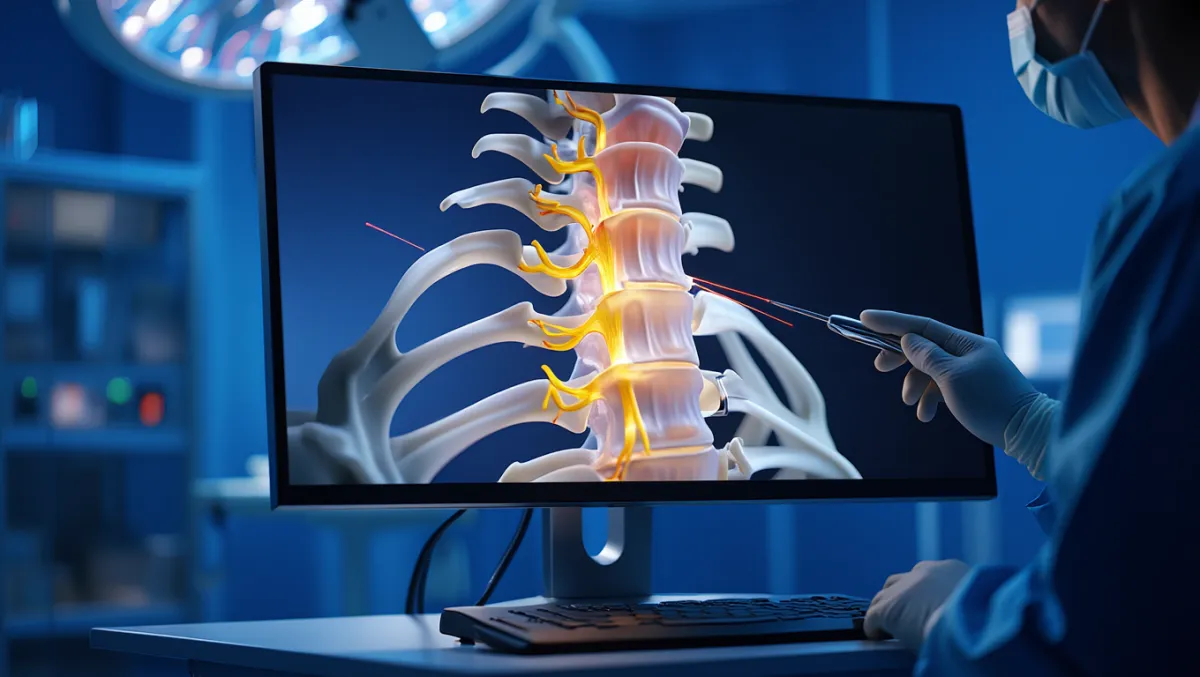
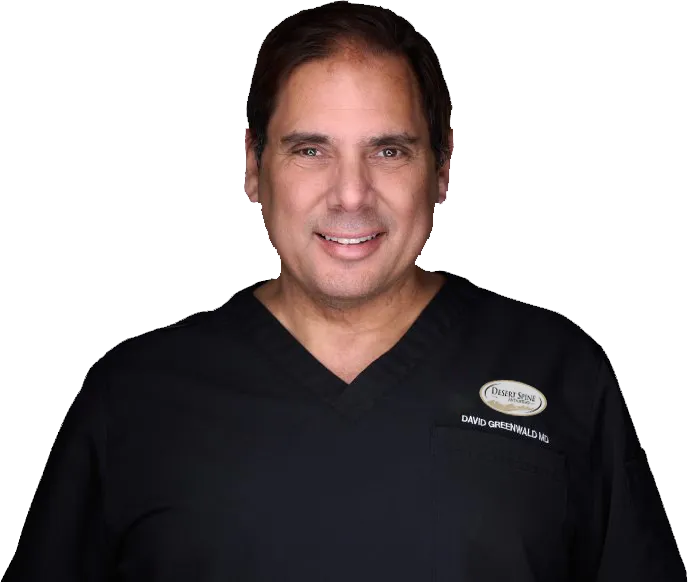
Dr. David L. Greenwald, M.D., F.A.C.S.
Neurosurgeon | Spine Surgeon | Regenerative Medicine
Dr. David L. Greenwald, MD, FACS, is a board-certified spine surgeon with advanced expertise in stenosis surgery, a procedure designed to relieve pressure on the spinal nerves or spinal cord caused by narrowing of the spinal canal. Spinal stenosis can result in pain, numbness, and weakness in the back, legs, or arms, often worsening over time. Dr. Greenwald performs minimally invasive decompression and fusion techniques to restore space within the spine, relieve nerve compression, and stabilize affected areas when necessary. His precision and patient-centered approach help individuals throughout South Florida experience significant pain reduction, improved mobility, and faster recovery while preserving as much natural anatomy as possible.
Recovery Roadmap

Day 0–1
Walking in 2 hours. Hospital stay 1-2 days..

Weeks 1-2
Wound care, light walking encouraged

Weeks 2-6
Desk work often resumed and PT starts

Weeks 6-12
Increased activity with structured rehab

Months 3-6
Most daily activities resumed

Months 6-12+
Fusion confirmed and full activity cleared
Stenosis Surgery Insights
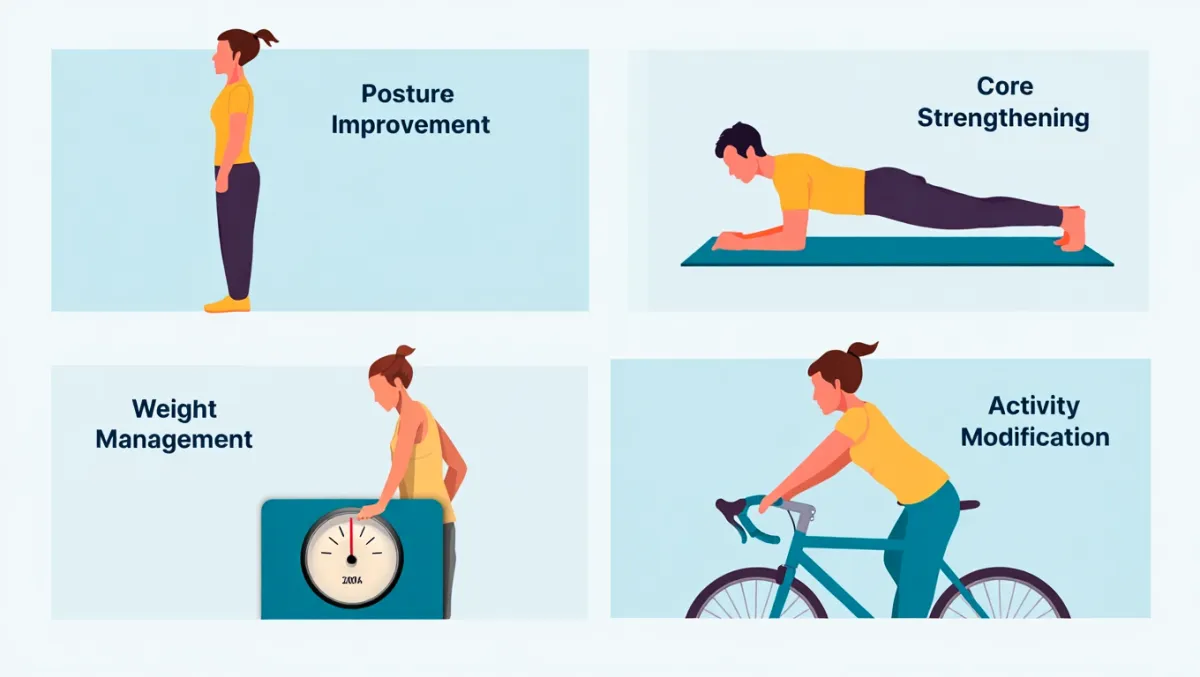
Stenosis Technical Surgical Procedure Steps
Approach: MIS tubular or open posterior midline depending on case.
Decompression: High-speed drill and Kerrison rongeurs used for laminotomy/laminectomy; hypertrophied ligamentum flavum resected.
Foraminotomy: Medial facetectomy and osteophytectomy enlarge foraminal corridor.
Fusion decision: Based on slip, instability, and facet removal; interbody cage and pedicle screw fixation added if applicable.
Closure: Meticulous hemostasis; layered closure; drain rarely needed in MIS cases.
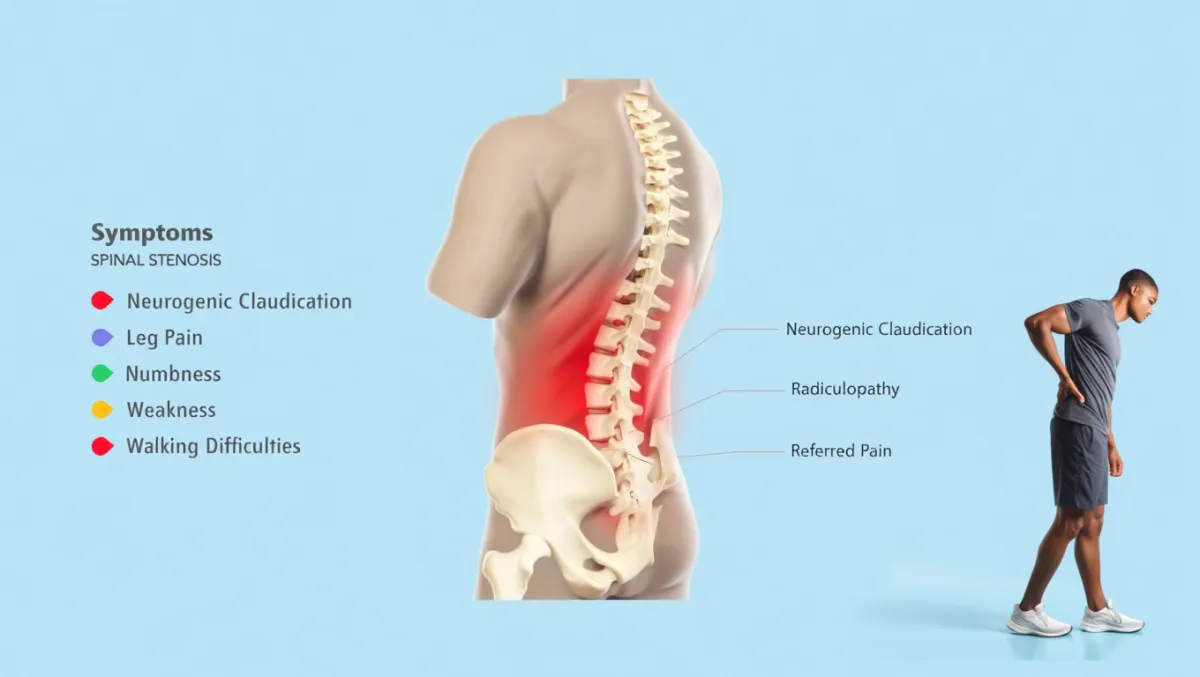
Benefits
Relief of leg pain, numbness, and weakness
Improved walking and standing tolerance
Often immediate improvement in neurogenic claudication
Minimally invasive techniques reduce pain, scarring, and downtime
Long-term stability when fusion is included where needed
Risks & Limitations
Infection, bleeding, dural tear/CSF leak
Nerve injury (rare with microsurgical precision)
Scar tissue or recurrent stenosis over time
Possible instability if too much bone removed without fusion
Longer recovery when fusion is required
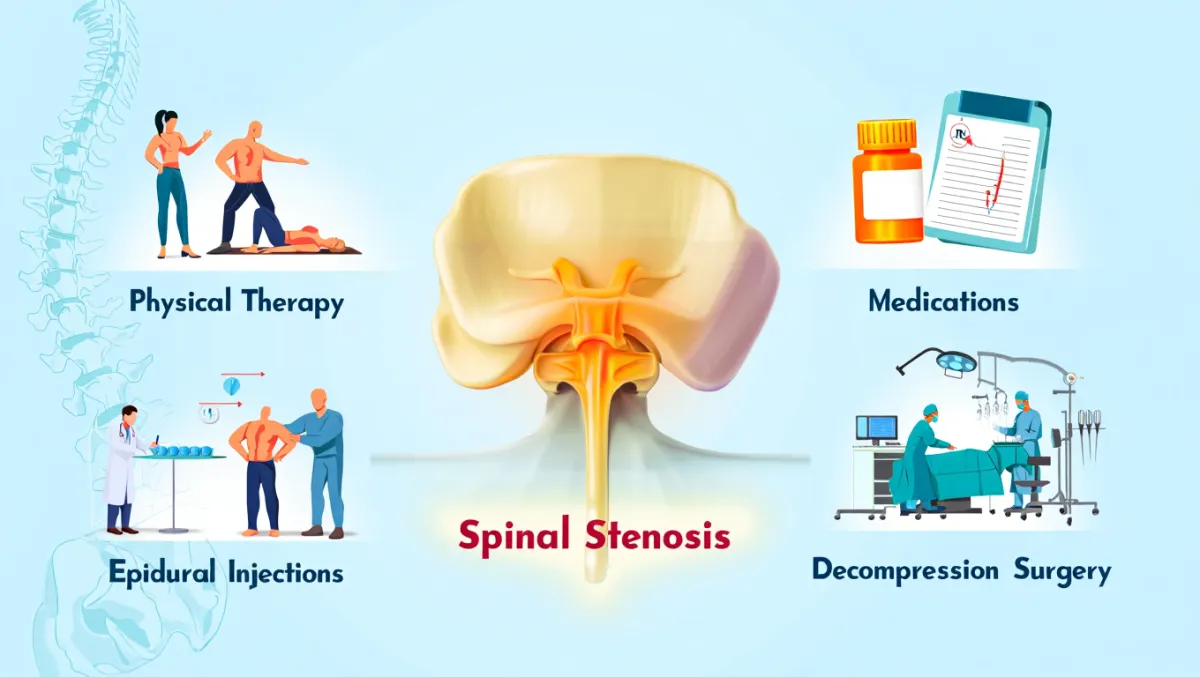
Why Choose Desert Spine and Pain?
Neurosurgeon-led care – Dr. Greenwald is a nationally recognized leader in stenosis treatment
Minimally invasive focus – Whenever possible, smaller incisions and muscle-sparing techniques
Conservative-first approach – Surgery only when PT, medications, and injections are not enough
Compassionate care – We explain every step so patients feel reassured and confident
Contact us for a Spine and Pain Consultation. Relief is just a phone call away!
Frequently Asked Questions
How do I know if I need stenosis surgery?
If you have severe pain, numbness, or weakness—especially if walking tolerance is limited—and conservative care has failed, surgery may be recommended.
What’s the difference between laminectomy and foraminotomy?
Laminectomy opens the spinal canal; foraminotomy opens the nerve root exit (foramen). They are often combined.
Will I need a fusion with my stenosis surgery?
Only if there is instability or deformity. Many decompressions do not require fusion.
How soon can I return to walking?
Most patients walk the same day or next, with improvement in leg pain often immediate.
How does Desert Spine and Pain perform stenosis surgery differently?
We use microsurgical and MIS techniques whenever possible, with neurosurgical precision and a patient-first philosophy.
Book your Spine Care Consultation Today!

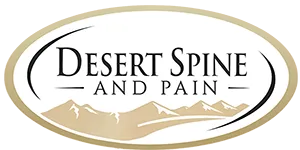
Desert Spine and Pain
Patient Centered & Partner Focused
Quick Links
Resources
Connect With Us
© Desert Spine and Pain. 2025. All Rights Reserved. Sitemap
